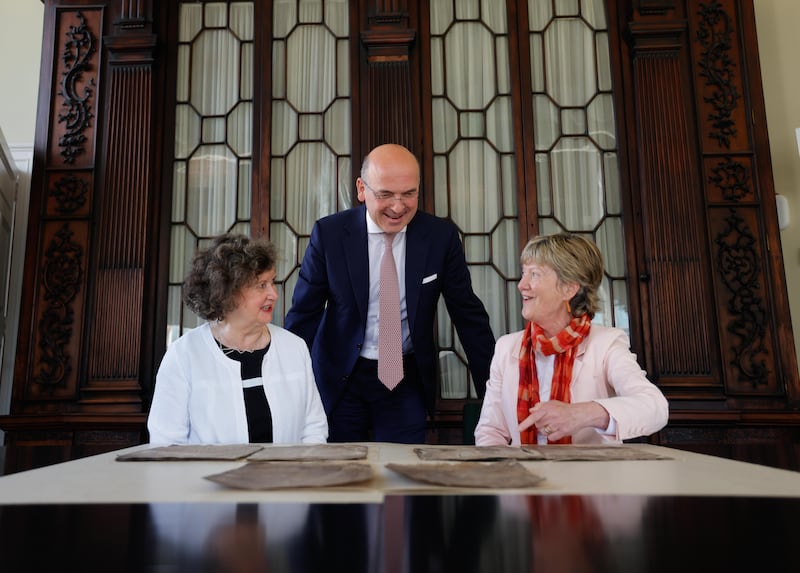The oldest and most important extant manuscript in the Irish language is to be restored and parts of it will become available to modern scholars for the first time.
The Book of Leinster dates from the 12th century and it is a compendium of prose, verse, genealogy, mythology and medicine known at the time.
Written by the “prime historian of Leinster”, Áed Úa Crimthainn, abbot of Terryglass, Co Tipperary, it was formerly known as the Lebor na Nuachongbála or Book of Nuachongbáil — a monastic site known today as Oughaval in Co Laois.
There are almost 374 pages of tightly written script, but some of it is illegible because of wear and tear. The conservators will remove very damaging repairs carried out to the manuscript before it was donated to Trinity College Dublin in the 19th century. The tears and splits will be repaired and there will be infilling of the lost script.
Conclave: Ralph Fiennes is flawless in Robert Harris’s preposterously gripping drama of papal electioneering
First Look: The Rooftop Bar cocktail and dining area at The Marker – the place to be when the sun sets
The Last of Us drops a bombshell for the TV ages. Did that really just happen?
Let’s put a real kitchen in every school. We could use some of the Apple taxes
TCD keeper of preservation and conservation Susie Bioletti said the Book of Leinster is the most significant of the 240 early Irish language manuscripts.
“By doing the conservation our communities of researchers and the public who want to engage with the past will be able to kickstart all sorts of investigations. It is boundless, really,” she said.
“It has ranked as our highest priority for quite a while. It was waiting for the right moment. This is the right moment. The outputs are going to be fantastic too.”
Finance to restore the manuscript and to provide high-resolution digital imagery will be provided by the Bank of America through its Global Art Conservation Project which also includes Notre Dame and the Michelangelo drawing/cartoon Epifania at the British Museum. Trinity is not disclosing how much money is being provided for the project.

The Book of Leinster contains the Irish “book of Genesis”, Lebor Gabála Érenn, which establishes the place of Ireland, the Irish people and their language in a biblical world setting. The Irish language, according to this book, was created after the confusion at the Tower of Babel.
An important version of the saga An Táin Bó Cúailnge and the story of Cú Chulainn is included in the book, which was mostly written before the Anglo-Norman invasion of Ireland in 1169.
It is also of interest to Galician scholars as it contains the origins myth of the story of Breogán who is said to have spotted Ireland from Brigantium — modern day A Coruña — and set sail for there.
Damian McManus, emeritus professor of early Irish at TCD, said the importance of documents such as this “cannot be overstated”.
“Irish has the oldest vernacular literature in western Europe and these manuscripts capture the earliest written evidence of the language,” he said.
“The variety of subject matter contained in these precious documents opens doors into many areas of research including... the identity of the Irish, the Viking, the Anglo-Norman and the English settler in Ireland.”
TCD manuscript curator Caoimhe Ní Ghormáin said the Book of Leinster was like a “snapshot into the Middle Ages”.











